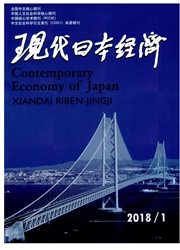

 中文摘要:
中文摘要:
在量化宽松货币政策的实施过程中,以日本银行为典型的“定量宽松”政策和以美联储为典型的“信贷宽松”政策在操作方式上存在着较大的差异。不同的量化宽松政策,其目标指向不同,应根据经济运行的具体状况选择不同的货币政策操作方式;我国实施宽松货币政策,应建立在对经济基本面的科学判断基础上,考虑金融体系和市场结构的特殊性,合理借鉴其他国家实践中创新的货币政策工具;宽松货币政策的实施,应该目标明确、操作审慎、可预期性强,并且前瞻性地考虑政策的退出方式。
 英文摘要:
英文摘要:
In the process of implementing quantitative ease policy, there exist great differences between the operation modes of BOJ's “quantitative ease” policy and FRB's “ credit ease”policy. The research on opera- tion modes of Japanese and American quantitative ease monetary policies has important implications for the im- plementation of relatively loose monetary policy in China : the choice of monetary policy operation mode should be according to concrete economic operation status as different quantitative ease monetary policies have differ- ent directions of aim; China implementing ease monetary policy should build upon scientific judgment of eco- nomic fundamentals, take the specificity of China's financial system and market structure into account and make rational use of the new monetary policy tools innovated in other countries practice; the implementing of quantitative ease monetary policy should be targeted, operated cautiously as well as anticipated, and prospec- tively consider the way of policy to fade.
 同期刊论文项目
同期刊论文项目
 同项目期刊论文
同项目期刊论文
 期刊信息
期刊信息
